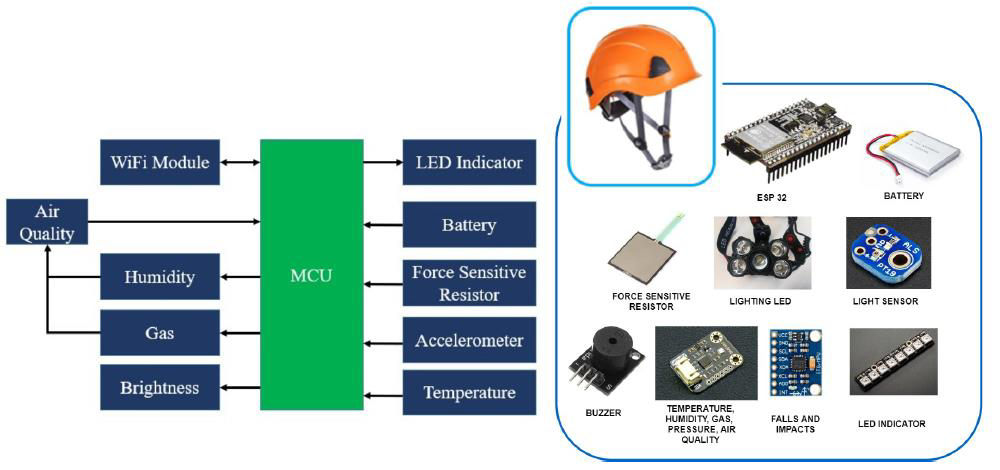The maturity of Industry 4.0 and IoT-based technologies has accelerated the development of “Smart PPE” solutions. The use of PPE based on information and communication technologies reduces the risk of accidents in the workplace by monitoring the environment through various sensors and detecting possible risks.
Israel Campero-Jurado, Sergio Márquez-Sánchez, Juan Quintanar-Gómez,Sara Rodríguez, and Juan M. Corchado developed a smart helmet prototype that monitors the conditions in the workers’ environment and performs a near real-time evaluation of risks in order to improve occupational health and safety (OHS). The innovative helmet is equipped with different sensors such as temperature, humidity, atmospheric pressure, the force exerted between the helmet and the user’s head, the variations in axes, air quality, and luminosity. The information coming from the sensors is transmitted to an AI-driven platform called Things Board for analysis which uses a Deep Convolutional Neural Network (ConvNet/CNN) for the detection of possible occupational risks.

For the transmission of the sensor data in ThingsBoard, Wi-Fi technologies have been selected due to their ability to transmit the information in Local Area Networks (LAN) to a web server responsible for collecting, processing, and transmitting anomaly warnings to the worker or administrative personnel. All these warningalerts will be transmitted to the operator by means of sound beeps. In addition, a LED strip is deployed on the helmet as a means of notifying the worker of anomalies through color codes presented in the environment.

